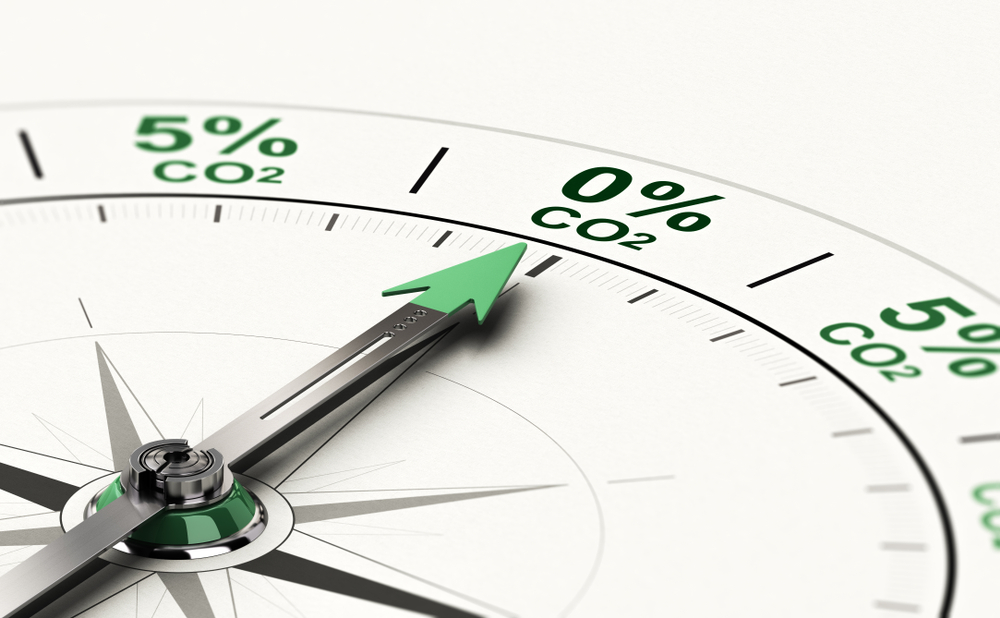By Gerry O’Sullivan, ActionZero Energy Risk and Procurement Manager
Over recent years we have all become more conscious of the role that carbon dioxide (CO2) plays in speeding up the global warming of our planet and the catastrophic impacts of this.
However, what is less evident to most of us is exactly how carbon emissions are measured and how the price of carbon is reflected in our energy costs here in Ireland.
Cap and trade mechanism helps curb emissions
Ireland is part of the EU Emissions Trading System (ETS) which covers approximately 45% of EU greenhouse gas emissions and includes approximately 11,000 of the largest installations that emit these gases.
This ETS scheme was launched back in 2005 and we are now in the fourth phase covering the years 2021 to 2030.
These installations include electricity power stations and large cement factories where significant quantities of fossil fuels are burned and consequently result in substantial amounts of CO2 being emitted into the atmosphere.
The ETS is a “cap and trade” mechanism where a limit (cap) is placed on each of the 11,000 installations regarding the amount of carbon that they can emit without penalty each year from their operations.
In Ireland there are just over 100 installations which are covered by the ETS scheme including companies such as CRH, Glanbia and Pfizer.
Each ETS participant must measure the total amount of carbon dioxide (and any other greenhouse gas) emitted each year and if the quantity exceeds their allowance, they must either purchase the balance in the carbon market or pay a severe penalty for the excess.
Carbon prices will have to rise to meet 2030 targets
Carbon dioxide is traded in a competitive market which allows carbon to be bought forward to balance requirements for each organisation participating in the ETS market.
Power stations generating electricity from fossil fuels include the cost of carbon in the delivered price of their electricity into the market and this directly impacts the price that consumers pay for electricity.
Tonnes of carbon traded as part of the ETS are termed European Union Allowances (EUA’s) with the current cost of one tonne at approximately €74 on the spot market. EUA’s can also be traded up to 2025 with the current price for EUA’s in 2025 at just over €80 per tonne.
EUA’s had traded for under €10 per tonne from 2014 until Feb 2018 and remained under €30 per tonne until December 2020. It can thus be seen that the price rise since then has been quite dramatic with the highest price of over €96 achieved at the start of last month.
Most analysts are predicting that carbon prices will have to rise further if the EU is to achieve reductions in emissions in line with its 2030 targets.
We must question our energy usage now more than ever
Carbon tax is also levied on consumers through their fuel bills or purchase of fossil fuels directly from merchants.
The level of carbon tax is set by the Government and is reviewed and mostly revised each year as part of the Budget. The overarching objective of the carbon tax is to make the burning of fossil fuels more expensive and therefore to encourage consumers at all levels to reduce energy consumption and to speed up the transition to renewables such as wind and solar.
The current conflict in Ukraine has greatly heightened the awareness in Europe of the need to move away from fossil fuels. It makes sense for us all to now think seriously before adding to the carbon in the atmosphere – do we really need to heat up the whole house if we are only using one room – could we walk, cycle, or take public transport as an alternative to using our cars.
Commercial organisations are becoming increasingly aware of their carbon footprint and should be taking steps to electrifying their heating requirements with recent innovations in heat pump technology which can now provide hot water at temperatures of over 90 degrees centigrade.









